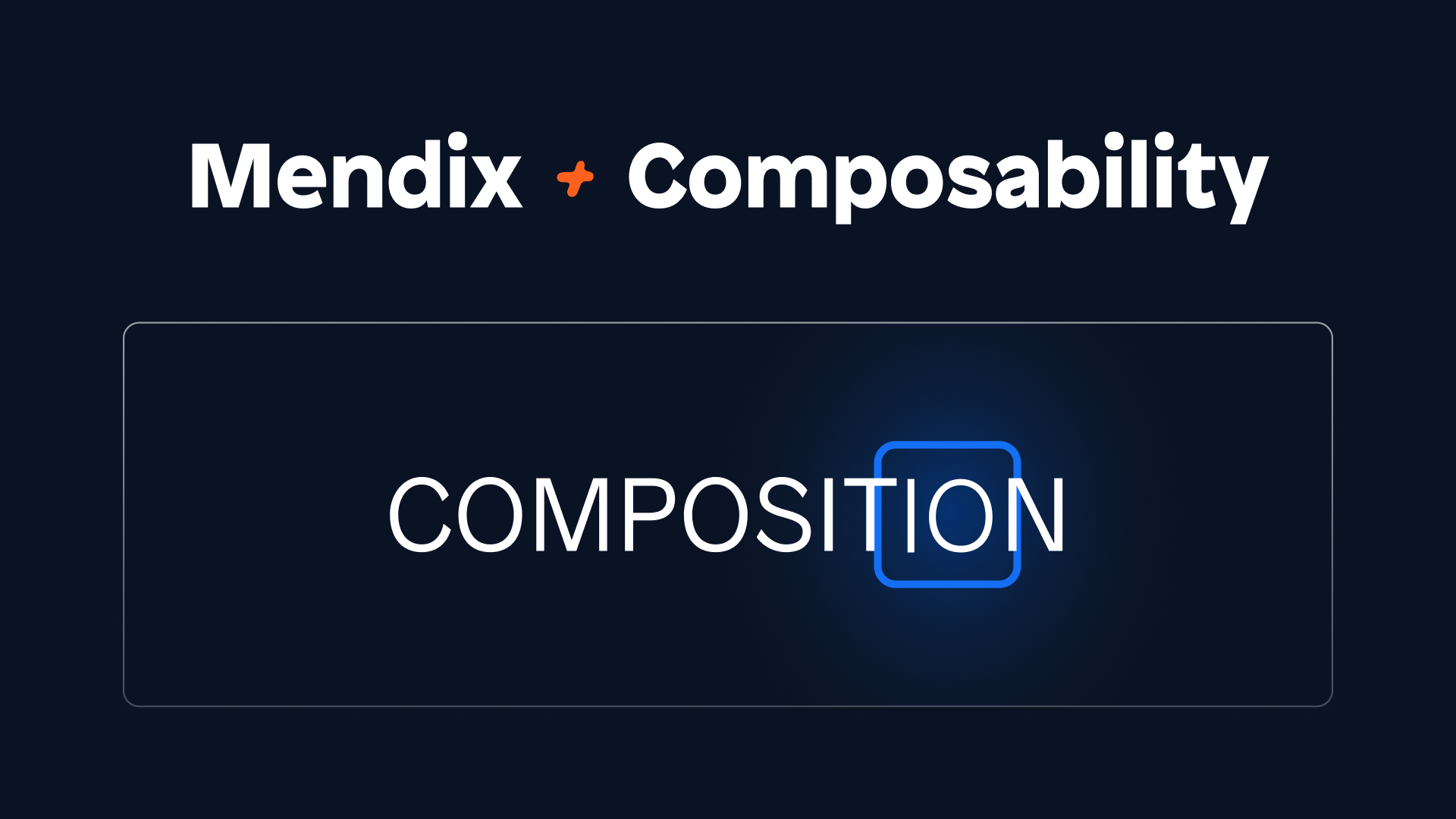A Low-Code Leader: Composing the Modern Enterprise with Mendix

Imagine, if you will, an organization that is primed for continuous digital transformation. Its processes are automated where they need to be. User experiences are fluid, responsive, and multimodal. The touchpoints across that customer or employee journey utilize the latest technology appropriate for that aspect of the business: AR on the shop floor, a native mobile app for field services, a conversational bot for your customer services team, or perhaps wearables for your security personnel. Now imagine an enterprise able to build and maintain these solutions in-house and keep in lockstep with market demand and customer expectations.
If you’re still primarily relying on traditional development, then this organization may sound like it’s straight out of the Twilight Zone. However, to help accelerate software development and delivery—and thus speed up business transformation—organizations are turning to low-code development platforms to make this a reality. Gartner ® projects in “Harness the Disruptive Powers of Low-Code” that “by 2025, 70% of new applications developed by enterprises will use no-code or low-code technologies.”
The reality is that it’s no longer a question of whether or not to go with low-code; it’s now a matter of which low-code platform is the right fit for your business. That answer can be found in the 2022 Gartner® Magic Quadrant™ for Enterprise Low Code Application Platforms, where you can see Mendix recognized as a low-code Leader.
Supplying the demand
According to the 2021 Gartner CIO Survey, 76% of CIOs saw the demand for digital products and services increase. While this jump was partially due in part because of the pandemic, demand won’t dissipate: 83% of those CIOs expect it to increase over the next year.
Addressing the problem with only traditional development is a costly and surefire way to impede any sort of business agility and progress toward digital transformation.
The demand isn’t simply just more solutions.
Your employees and customers demand seamless experiences and engaging through their preferred modes of interaction, not yours. The demand is for timelier updates, new technologies, and the ability to address market disruptions–and opportunities. To put a fine point on it, the demand is for constant change. Modern enterprise application development requires creating and leveraging adaptive software solutions comprising of re-composable building blocks so that your organization can assemble new applications without having to start from scratch or rely on commercial off-the-shelf solutions.
It’s for the above reasons that traditional development is no longer primarily meeting the needs of today’s enterprise. Addressing the problem with only traditional development is a costly and surefire way to impede any sort of business agility and progress toward digital transformation.
To continuously and iteratively improve the way users experience your enterprise requires re-thinking the way you develop and deliver them, moving away from monolithic solutions of the past. This begs for a composable way of thinking about business architecture and for composable technologies that support business agility and adaptability. For those seeking to transform their organizations into change-ready enterprises, composability stands to be a major factor.
One way of rethinking application development is creating a modular way of developing and delivering solutions. In fact, in their 2022 predictions piece, “Composable Applications Accelerate Digital Business” Gartner posits that “by 2024, 80% of CIOs surveyed will list modular business redesign—through composability–as a top-five reason for accelerated business performance.” Taking mobile architectures as an example, rather than creating monolithic apps that work for web, or native, or PWA, an enterprise that leverages composability creates the building blocks that allow for reuse in new contexts and from modality to modality.
The other way of thinking is by opening the aperture of who develops and delivers software in an organization. When you arm people without traditional development backgrounds with the tools to assemble solutions, this helps optimize business processes and enhance customer experience, but also relieves the demand burden that’s currently being shouldered by IT. The notion of democratization is spreading: The 2022 Gartner View from the Board of Directors Survey shows that “40% of boards of directors have moved digital business-related budgets to the business unit to accelerate digitalization.”
Why go low-code?
The missing puzzle piece to composability and development democratization can be found in low-code application platforms.
Mendix stands to be your go-to enterprise application development platform.
This is where low-code comes in. With a low-code application platform, organizations can simplify complex builds that touch on many modalities. With visual modeling that abstracts programming, business developers can work by themselves or in conjunction with professional developers to create and deliver solutions that can help their part of the business.
Why Mendix?
Choosing the right low-code platform for your organization is hard when you have 400 supposed low-code vendors. The 2022 Gartner® Magic Quadrant™ for Enterprise Low-Code Application Platforms sifts out the noise and offers you a tight list of vendors that range from Niche Player to Visionary to Leader. Mendix, for a fourth year running, is positioned as a Leader and the Furthest in Completeness of Vision.
As organizations strive to become more composable and move toward development democratization, it’s clear that your organization’s future rests on its ability to adapt and fit all the pieces together. With that in mind, Mendix stands to be your go-to enterprise application development platform.
The Mendix Platform supports both professional and business developers. Developers will find built-in collaboration tools that carry through the entire application lifecycle. You can deploy applications with one-click and are cloud-native by default, simplifying operations. And with user-based security, version control, and an automated testing suite, you can more confidently govern development across the organization.
Here’s a visual way of looking at this information:

The right fit
The low-code platform that you choose should be the one that fits your business best. As enterprise development moves more toward composability and reusability, it’d be best to think about what’s up ahead and what fits your organization’s future the best.
The best low-code platform will help you assemble the building blocks over and over again to create the solutions that your customers and employees are demanding. And the reality is that Mendix is your best bet for that.
Gartner and Magic Quadrant are registered trademarks of Gartner, Inc. and/or its affiliates in the U.S. and internationally and are used herein with permission. All rights reserved
Gartner does not endorse any vendor, product or service depicted in its research publications, and does not advise technology users to select only those vendors with the highest ratings or other designation. Gartner research publications consist of the opinions of Gartner’s research organization and should not be construed as statements of fact. Gartner disclaims all warranties, expressed or implied, with respect to this research, including any warranties of merchantability or fitness for a particular purpose.